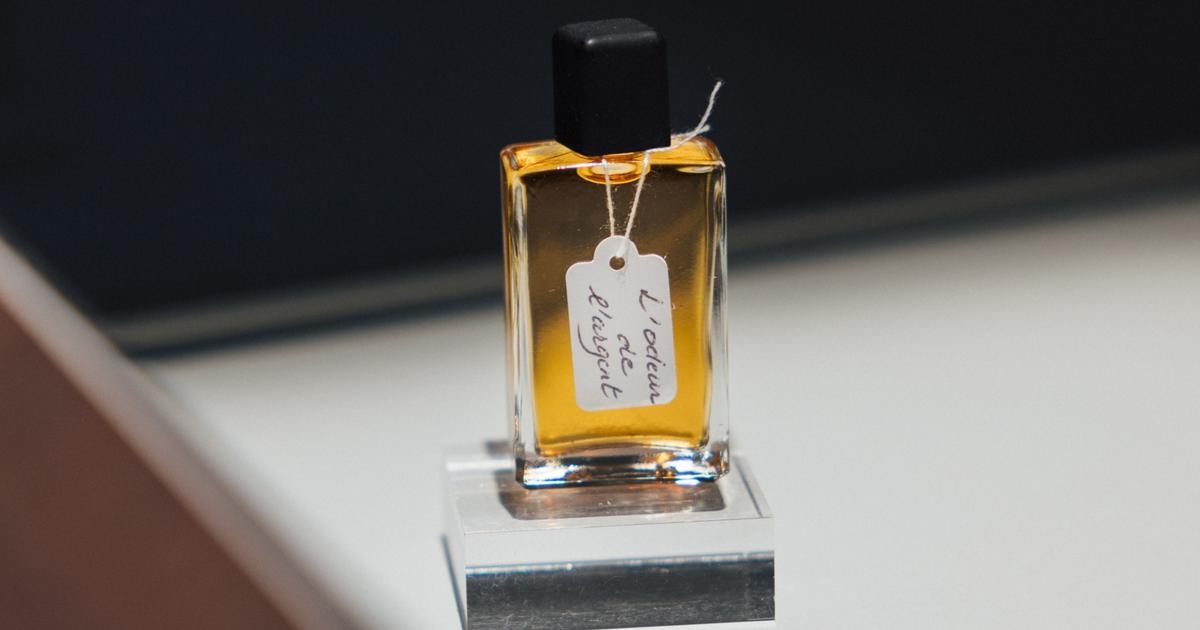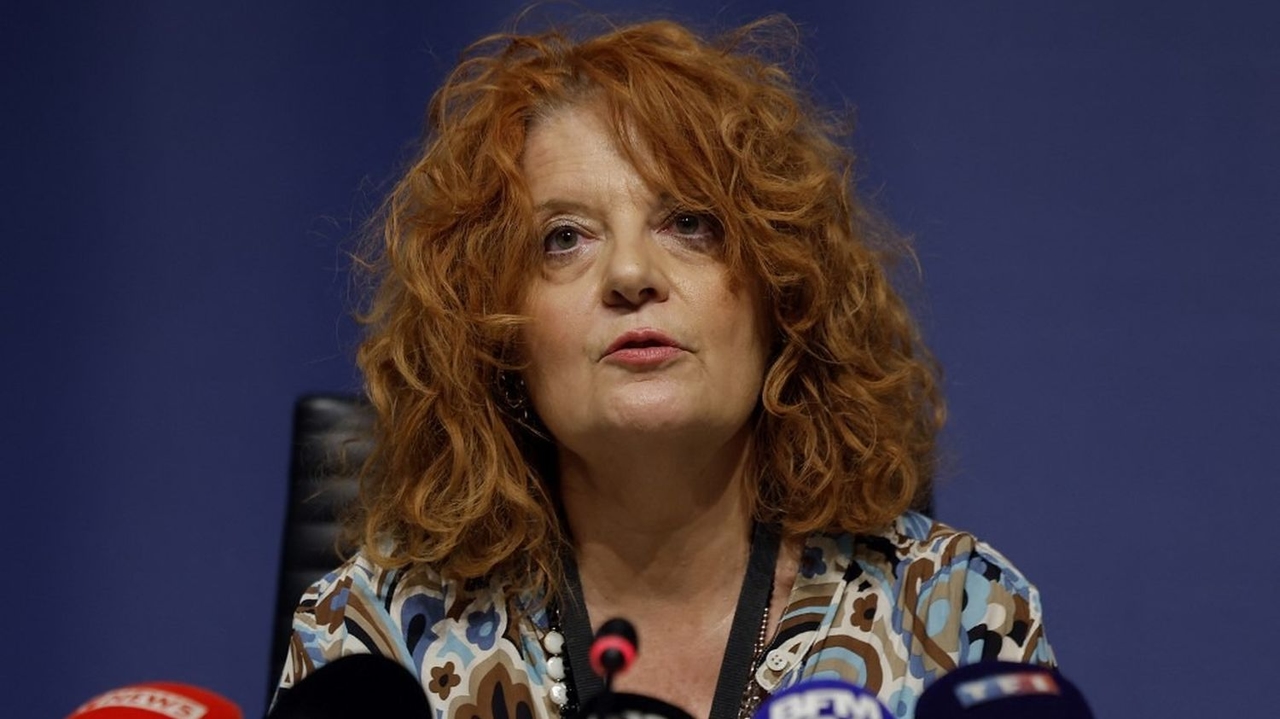"I understood thanks to Sophie Calle that perfume must respond to experiments other than simply smelling good": the Palais de Tokyo exhibits the olfactory art of Francis Kurkdjian

The Frenchman who composed Le Mâle for Jean Paul Gaultier, created Baccarat Rouge 540 and now designs fragrances for Dior, revisits thirty years of artistic collaborations in an astonishing retrospective to smell, "Perfume, sculpture of the invisible" until November 23 .
If money had a smell, it would be that of a dollar bill that had passed through many hands, according to Francis Kurkdjian . A scent both alluring and repulsive, created at Sophie Calle's request in 1999 and the centerpiece of this exhibition. " At that time, I was living in New York, and we paid a lot in paper money, unlike in France where we still used checks. The smell of the American bill was quite unique, a mix of grease and grime from repeated handling, hence this smell of metal, linen paper, ink, and dampness," explains the artist, to whom the Palais de Tokyo is dedicating the exhibition "Perfume, Sculpture of the Invisible" until November 23. " But it was above all this encounter with Sophie Calle that was decisive."
Six years earlier, the Frenchman had barely graduated and had already made a name for himself by creating Le Mâle for Jean Paul Gaultier . “For four or five years, I had been composing things that were only meant to smell good. While our teachers had hammered home the idea that we were artists, I was quickly confronted with an industrial and economic reality. I was asked to ‘add more flowers, more depth, more sensuality.’ Surprising, when you have an artistic approach, to have so many constraints, isn’t it? Perfume should be open to other forms of experimentation, and that’s what I understood thanks to Sophie Calle: that you could take perfume out of the bottle to explore different aesthetic realms .”
After this first carte blanche, many collaborations followed. With the theatre man Cyril Teste, the starred chef Anne-Sophie Pic, the conductor Klaus Mäkelä, the pianists Katia and Marielle Labèque... " The cross with other disciplines allowed me to give form to perfumes that are essentially invisible, by playing with space, light, sound, matter ," continues Francis Kurkdjian who, for thirty years, has not been content with just " wearable perfumes " as he calls the mass-market compositions he creates. Besides Le Mâle, he is responsible for numerous fashion fragrances including For Her by Narciso Rodriguez (with his partner Christine Nagel, now at Hermès), Armani Mania by Giorgio Armani, My Burberry by Burberry… In 2009, with his partner Marc Chaya , he also launched his own brand, Maison Francis Kurkdjian, whose Baccarat Rouge 540 remains one of the biggest successes in perfumery, equally acclaimed by American stars and Gen Z. Last but not least , four years ago, he landed the coveted position of creative director of Christian Dior perfumes .
Between olfactory heritage and new technologies
But it is the richness of a more conceptual universe that this retrospective, installed in the Saut du Loup space within the Palais de Tokyo until November 23, reveals—or rather, invites us to sense. “ True sculptures of the invisible, his perfumes are works of art in their own right, whose very essence is inhaled,” emphasizes Jérôme Neutres, the exhibition's curator. “With the support of Marc Chaya, a truly unique body of work in perfumery has been built over the years, developing both iconic fragrances and spectacular artistic events. ”
Even if the world becomes completely virtual tomorrow, smell will not disappear. Our sense of smell is what differentiates us from machines, what allows us to live and therefore to exist.
Francis Kurkdjian
Beyond the scents presented throughout this exhibition, it is above all the multiple methods of diffusion, revisited and sometimes even invented by Francis Kurkdjian, that are most surprising. These include the poetic perfumed fountains and fragrant bubbles created for the Palace of Versailles, and the very Dadaist Or Bleu, a scented spring water for drinking, developed in collaboration with the artist Yann Toma in 2012, which echoes the Queen of Hungary's Water, considered the very first perfume composed in Europe in the 14th century, serving as both a fragrance and a drinkable medicine. Echoing the scents of the past and the evolution of perfumery since the Renaissance, the exhibition also features perfumed gloves created using 18th - century methods by this history enthusiast. And then there's Le Sillage de la Reine, which recreates a fragrance in the style of Marie Antoinette, following the formulation rules of the period.
While these creations revisit olfactory heritage, they in no way prevent perfumers from exploring new technologies. Take, for example, the sculptural diffuser created by goldsmith Nicolas Marischael and designer Felipe Ribon, which releases the scent as air passes through it. Or consider the futuristic V-Scent device, capable of diffusing connected scents within a virtual reality headset, scents that are triggered by an immersive experience conceived by Cyril Teste and artist Hugo Arcier. “ If tomorrow the world becomes completely virtual, scent will not disappear . Our sense of smell is what differentiates us from machines, allowing us to live and therefore to exist. It is intrinsically linked to our humanity. Sensory experience defines our relationship with the body. When I compose a perfume, I work through sensations, words, and images. Everything I cannot express through these words, sensations, and images, perfume allows me to convey.” "And that is precisely the achievement of this exhibition: to immerse us with delight in an unsuspected world of olfactory emotions.
lefigaro



